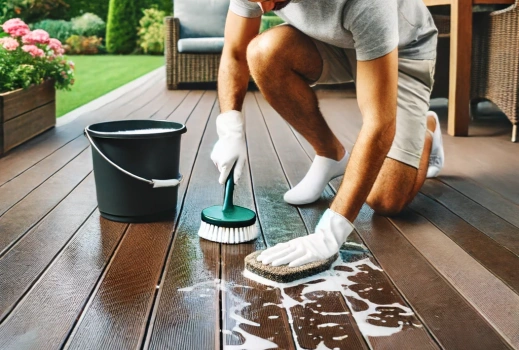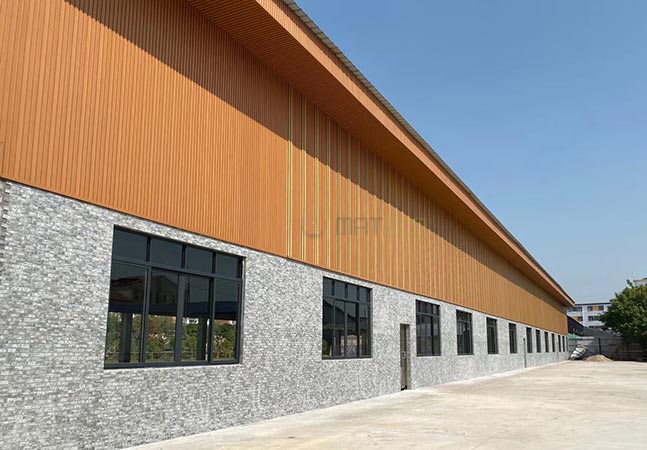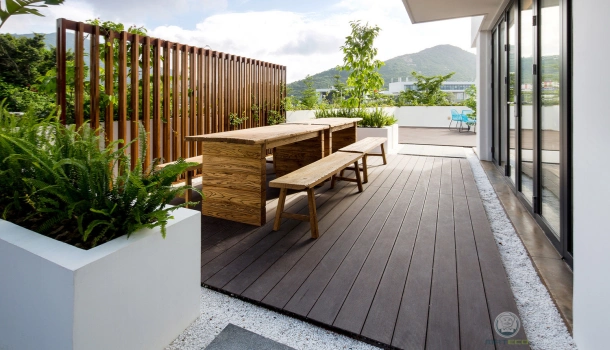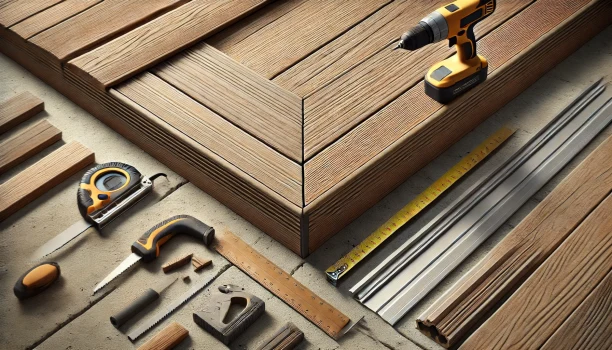How to Clean Composite Decking Naturally
Composite decking is a popular choice for homeowners due to its durability and low maintenance requirements. Unlike traditional wood, composite materials resist weathering, staining, and fading. However, to ensure that your composite deck remains in top condition and retains its beauty for years to come, regular cleaning is essential.

Table of Contents
1. Why do you need to clean composite decking?
Composite decking requires less maintenance than wood, but regular cleaning is still crucial to maintain its appearance and longevity. Dirt, debris, and biological growth like mold can accumulate on the surface, leading to unsightly stains and potential slip hazards. Regular cleaning not only keeps your deck looking pristine but also prevents the buildup of grime that can degrade the material over time.
2. How to Clean Composite Decking
To maintain the beauty and longevity of your composite decking, it’s important to clean it regularly and properly. Here’s a detailed guide to cleaning your composite deck effectively:
1) Preparation:
Clear the Deck: Begin by removing all furniture, grills, and other items from the deck to ensure every part of the decking is accessible.
Sweep the Surface: Use a broom to sweep off all loose debris such as leaves, twigs, and dirt. This prevents scratching the deck during the washing process and ensures the cleaning solution can work more effectively.
2) Choosing the Right Cleaning Solution:
Mild Soap and Water: For general cleaning, a mild dish soap mixed with warm water is usually sufficient. This mixture is gentle and won’t damage the composite material.
Commercial Cleaners: For tougher stains or built-up grime, consider using a cleaner specifically designed for composite decking. Always follow the manufacturer's instructions regarding the application and use of these products.
Avoid Harsh Chemicals: Do not use harsh chemical cleaners or bleach, as these can discolor or damage the surface of the decking.
3) Applying the Cleaning Solution:
Soft Bristle Brush: Dip a soft bristle brush into your cleaning solution. It's important to use a brush soft enough to not scratch the surface but sturdy enough to scrub away dirt and stains.
Scrubbing the Deck: Start at one end of the deck and gently scrub the surface in a circular motion. Pay extra attention to areas that are particularly dirty or have visible stains. For larger decks, work in sections to ensure the cleaning solution does not dry on the deck.
4) Rinsing the Deck:
Thorough Rinsing: After you've scrubbed the entire deck, rinse off the cleaning solution completely with a garden hose. Ensure all soap suds and residue are washed away because leftover soap can attract more dirt.
High-Pressure Settings: If you use a hose with adjustable settings, set it to a stronger stream to effectively clear the soap and lifted dirt. However, be careful not to use a setting that might damage the material.
5) Drying the Deck:
Natural Air-Drying: Allow the deck to air-dry completely. Avoid placing furniture and other items back on the deck until it's fully dry to prevent trapping moisture, which could lead to mold and mildew formation.

3. How to Clean Composite Decking Without a Pressure Washer
Although a pressure washer can be used on composite decking, it must be done with care to avoid damaging the deck’s surface. If you don’t have a pressure washer or prefer not to use one, you can still effectively clean your composite decking:
Garden Hose: Use a garden hose with a spray attachment to rinse the deck and remove loose debris.
Diluted Vinegar Solution: For a natural cleaning solution, mix equal parts water and white vinegar. This solution is particularly effective for removing greasy stains and mildew.
Baking Soda Paste: For stubborn stains, apply a paste made from baking soda and water directly to the stain, let it sit, then scrub and rinse off.
4. Frequency of Cleaning Composite Decking
To keep your composite deck looking its best, a thorough cleaning should be conducted at least twice a year—preferably in the spring and fall. However, if your deck is exposed to heavy foot traffic or accumulates debris quickly, you may need to clean it more frequently. Regular inspections will help you determine the right cleaning schedule for your decking.
 FAQs
FAQs
1. Can I clean my deck with bleach?
Not recommended. While bleach can be effective in removing stains and killing mold, it's harsh and can damage wood fibers. Use diluted bleach solutions cautiously, especially on wood decks, and always rinse thoroughly after application.
2. Is vinegar a good alternative for cleaning decking?
Yes, vinegar is an excellent, eco-friendly alternative for cleaning decks. It effectively removes mildew and light stains without the harsh effects of chemicals. Apply a solution of one part water to one part vinegar, let it sit on the affected areas for a few minutes, then scrub and rinse.
3. What should you not use on a composite deck?
When caring for composite decking, avoid harsh chemicals like bleach or chlorine, which can discolor and weaken the material. Abrasive tools such as steel brushes can scratch the deck, while high-pressure washing can damage the surface. Avoid using oil-based products, which don't adhere well, and rubber mats, which may cause discoloration. Also, do not use sand as traction on ice; instead, choose calcium chloride-based products safe for composite decks. Lastly, protect your deck from the heat of grills and other hot items to prevent melting or warping.
If you are looking for a WPC manufacturer, MATECO will be your best choice.
Website: https://www.matecowpc.com
WhatsApp: +86-13380085620
Email: info@matecowpc.com
















